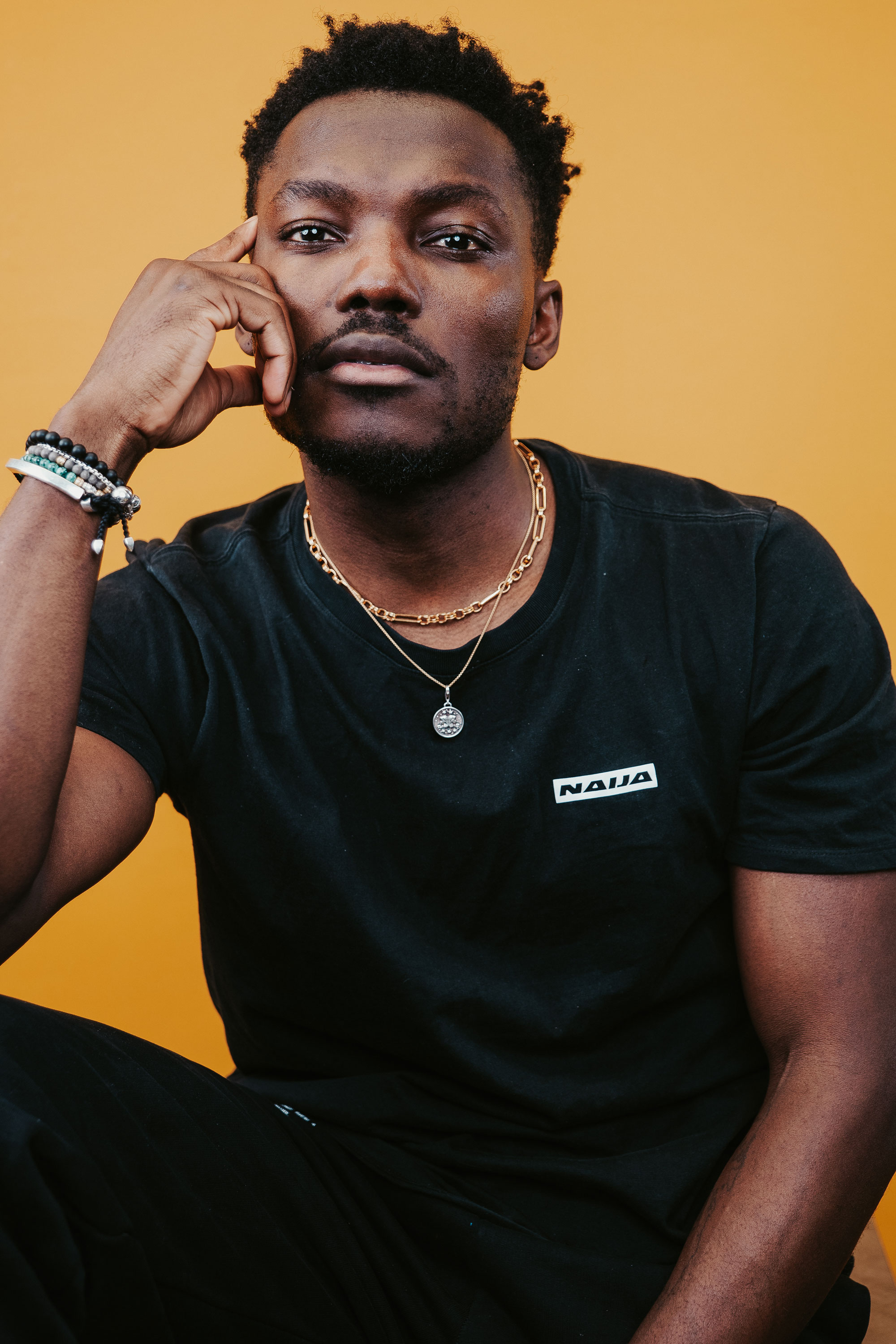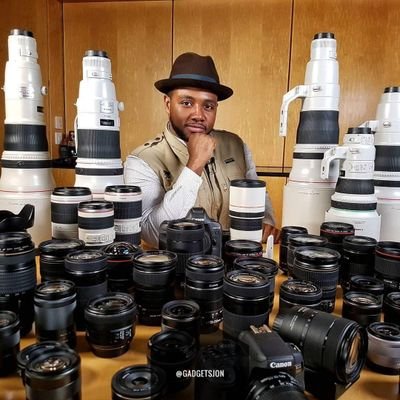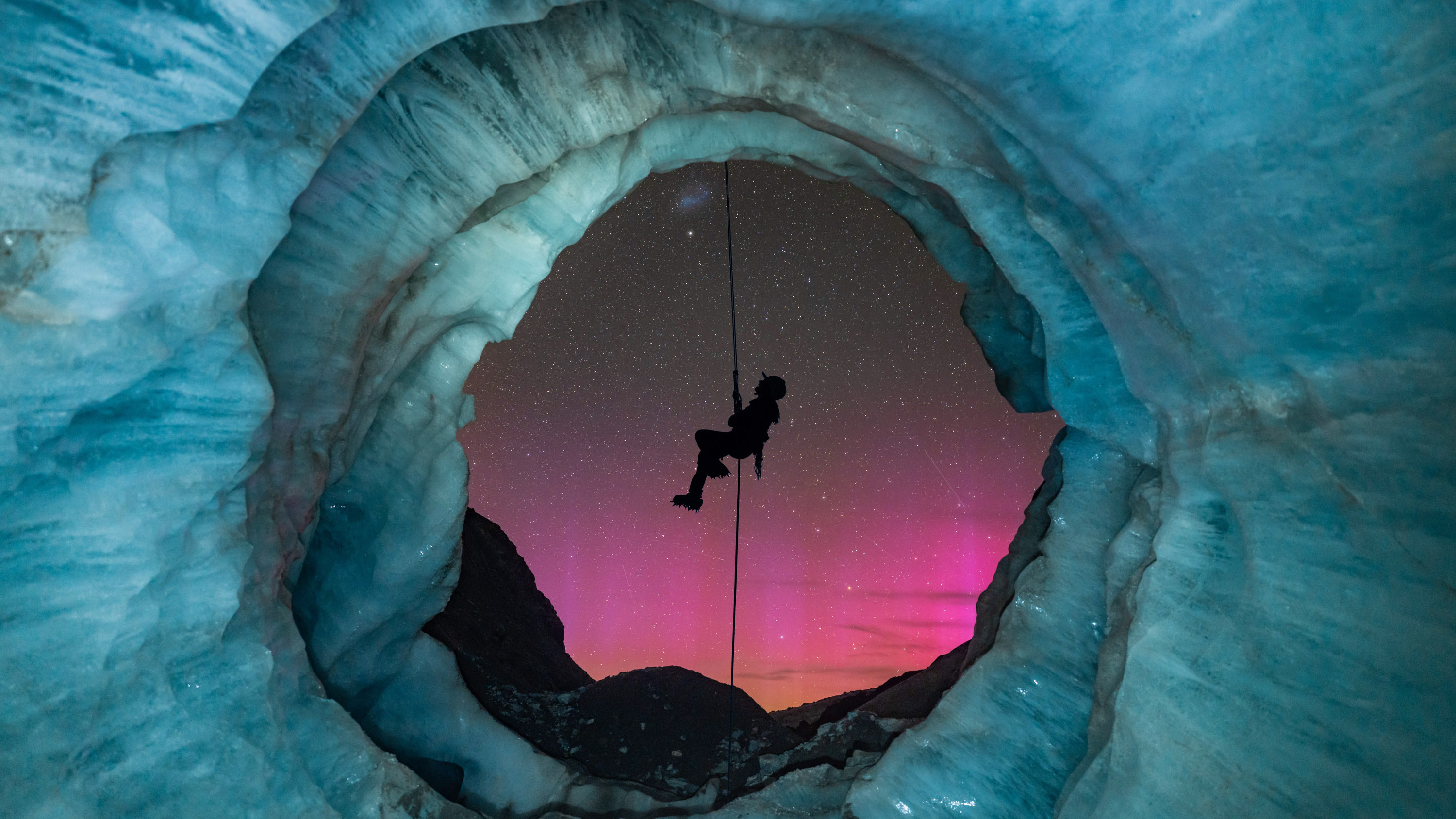How I became a YouTuber: we get the lowdown on camera kit from GadgetsBoy
Jon Devo talks to successful YouTube creator Tomi Adebayo (GadgetsBoy) about how he got where he is and the kit he uses
Tomi, also known as GadgetsBoy, is a YouTuber and presenter who has accumulated a massive following of almost 100,000 people on social media. Where did he start? Well as most YouTubers do, Tomi started GadgetsBoy in his bedroom.
Armed with a Nikon D3100 on a tripod, a Sony RX100 to take to events and a Zoom H1 audio recorder for sound, Tomi Adebayo began sharing his passion for technology and gadgets with no real plan for making a career out of content creation. “I just did it because it was fun, it gave me a distraction from work. Plus I got to try out new products and travel to events,” Tomi told us.
When Tomi began shooting videos for YouTube, he was working as a software developer. He had no formal training in filmmaking and learned through trial and error. As he developed his channel, Tomi started watching tutorials on YouTube to improve his understanding of lighting and sound, as well as paying attention to what other popular tech YouTubers were doing. Among his top early YouTube influences, Tomi cites; Ben Brown, Fun For Louis, Sawyer Hartman, Finn Harris and Casey Neistat, as names that inspired him to get out and create more.
Tomi found that developing his content making skills made him a more rounded professional as his career evolved from IT and moved into the worlds of advertising and marketing. That was the benefit of running his YouTube channel alongside his day job. It took years of consistent work to build the GadgetsBoy platform to the point that he could take the leap and commit to it full-time.
Here are a couple of his recent YouTube videos:
When he started out, being a content creator with a YouTube channel wasn’t a viable career prospect. Today, Tomi works out of his own studio. And he’s been featured in major campaigns, presented for brands all over the world and covered some of the most exciting technology releases of the past decade.
How to become a YouTuber: audio
Why you can trust Digital Camera World
"I’ve used many different pieces of audio equipment over the years. It can take a long time to arrive at a setup that works for your personal shooting style. Now I have my go-to audio kit for different scenarios.
In the studio, I switch between the Sennheiser MKH 416 shotgun microphone hooked up to the Sound Devices MixPre 3 II audio recorder, and the Rode VideoMic NTG on-camera shotgun mic. Both microphones are excellent for the studio environment, but the Sennheiser is geared towards broadcast, so if you need to get outside and capture audio, this would be my preference.
When I’m filming in-car shots and speaking to the camera, interviewing others or perhaps shooting a reporter-style content, I tend to use the Rode Wireless Go system. This allows me to capture audio from two people speaking at the same time to one transmitter and it records backup sound on the device for redundancy. When recording voiceover content or podcasts, I have a Shure MV7 podcast mic, it’s plug and play, and it’s super easy to use with excellent sound quality. This is mounted on a Rode mic arm and I have a generic pop filter from Amazon."
How to become a YouTuber: lighting
"Lighting is key in both photography and videography. If you get the lighting right, you could shoot professional-looking content on an iPhone 13 and no one would know any different.
I have the Godox SL-200W lighting kit, one with a standard diffuser and one with a lantern diffuser, which I use in my studio. I can adjust their brightness and they’re both attached to Neewer Pro metal C-stands with wheels so I can easily move them around.
When I’m not in the studio, I can dismantle them and use a Manfrotto clamp to attach them anywhere when extra light is needed. I also have a Rotolight Anova Pro 2 Bi-Color Ultrawide, which I use to flood the background when shooting monitors, phone displays or laptop screens and sometimes when I’m shooting stills, I can also use it as a flashgun with Rotolight high speed sync wireless transmitters that works with my Sony camera and the Lumix."
How to become a YouTuber: cameras
I use two cameras for the majority of my shoots. During the pandemic, I upgraded to the Sony A7S III, after using the A7S II for many years. The reason I chose this camera is that it’s compact, offers the ability to shoot 4K/60p – although I typically shoot at 30fps – and it has amazing lowlight ability. But most importantly, it has a reliable autofocusing system. In my line of work, you predominantly have to be a selfshooter, so it’s important to have something that allows me to focus on presenting and not worry if the camera is in focus or not.
The second camera I use is the Panasonic Lumix S1 for all my thumbnails and photography work. Although it’s a little on the chunky side, it’s a brilliant camera for capturing high resolution images for clients, as well as social media.
As far as lenses go, I mainly use the Sony G Master 24-70mm f/2.8 lens. It’s a great lens for most scenarios, from shooting wide to getting close up for products I’m shooting. I also use a wider Sony FE 16-35mm f/4 Zeiss lens for in-car driving shots – when I’m filming car reviews, it’s ideal.
For stills on the Lumix, I mostly use the Lumix 50mm f/1.4 S Pro. It delivers the goods every time. It offers a great shallow depth of field, it’s not too heavy and captures sharp images that arrest people’s attention and keep them engaged.
How to become a YouTuber: tripod
I use a Manfrotto 190X Pro aluminum 4-section tripod with the 90° column system. It’s lightweight and robust enough to log around anywhere with me. I combine this with a Manfrotto fluid head with a flat base so I can create smooth panning shots when shooting cars and product reviews.
This combination works really well and for anyone who’s on a budget; this is a great place to start and will last you a long time. It’s also very easy to attach and remove your camera when switching from tripod to handheld.
How to become a YouTuber: video editing software
The software that I use is just a matter of preference. I don’t think there’s a best video editor for YouTube. I use Final Cut Pro X because I enjoy the simplicity of it. It isn’t stacked with convoluted features that I don’t need, like Adobe Premiere Pro, and there’s access to a ton of plugins online. The only downside is that you will need a capable Apple Mac computer to run the software.
For audio capture, I use Audacity, a free application that works like a dream for any voiceover or podcast recording. For image processing, editing and thumbnail design, I use Adobe Photoshop and Lightroom.
How to become a YouTuber: computers and monitors
For the smoothest experience, I have a Mac Mini M1 for now and it’s designed with Final Cut Pro in mind, so there’s no glitches, no crashes and it works with Apple ProRes like a charm. You can even shoot high quality ProRes 422 files or HDR content and process it easily.
I have this hooked up to two Samsung LC34J791WTUXEN 34" Curved UltraWide LED monitors, one is connected via Thunderbolt and the other via HDMI. They’re superb color accurate high-resolution displays, ideal for 4K-video and photo editing.
Speaking of monitors, I also use the Atomos Ninja V monitor for my camera, which allows me to record directly to a solid state drive. It also lets me control the file format and offers plenty of other useful features from focus peaking to exposure monitoring.
How to become a YouTuber: storage
I have two OWC 4-Bay storage enclosures with dual Thunderbolt 3 ports with over 50TB of storage. This allows me to have a very organised storage system and I chose this because I can daisy-chain the drives. The benefit of this approach is it should last a long time before you need to worry about replacing them. You can have a different RAID setup, but I have mine set up for the maximum storage, and I have a Synology DS920+ 4-Bay NAS system for backing up files I deem very important. My OWC is hooked to my Mac Mini, which I also use to access my files directly from Final Cut Pro X while I’m editing my videos.
Read more:
• Best filmmaking cameras
• Best cameras for vlogging
• Best on-camera monitors
• Best video tripod
• Best video editing software
The best camera deals, reviews, product advice, and unmissable photography news, direct to your inbox!
Jon is a gadget reviewer, content creator and influencer. He spends his time reviewing products, covering technology news, giving talks on content strategy and creating content in partnership with a wide variety of forward-thinking brands. He also contributes to commercial radio, as well as in national print newspapers and magazines.





